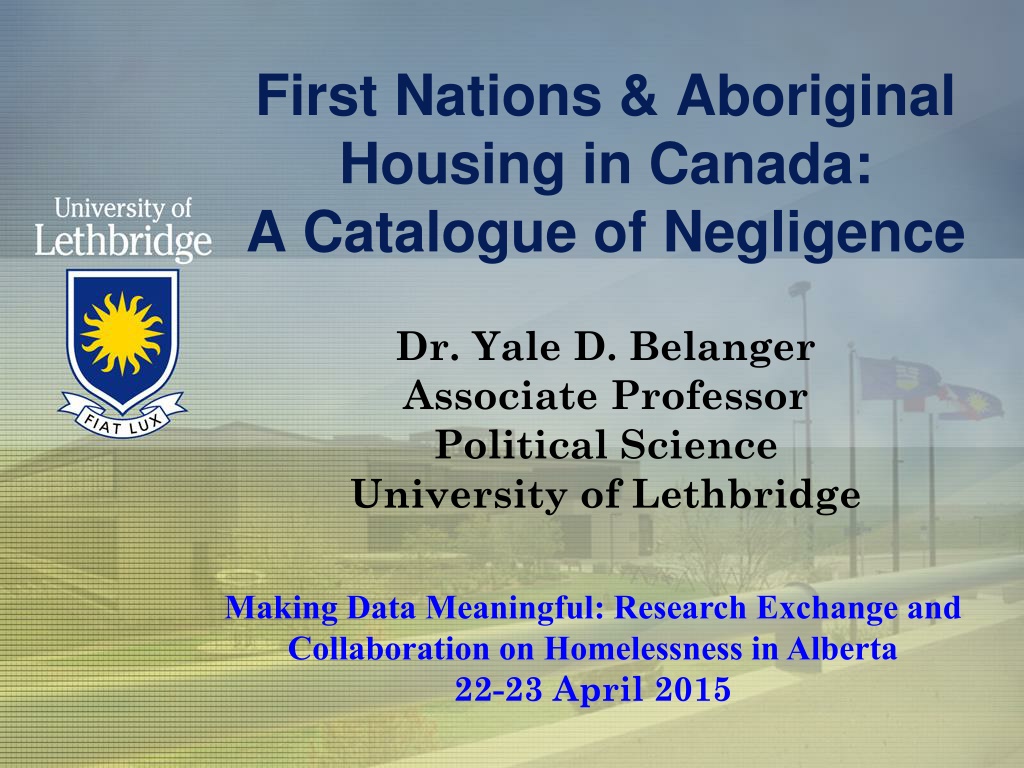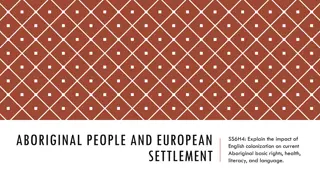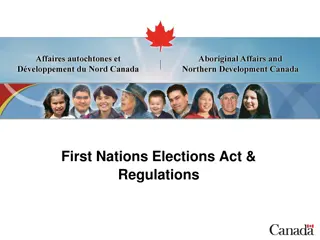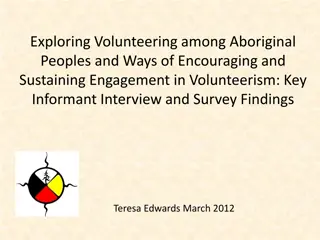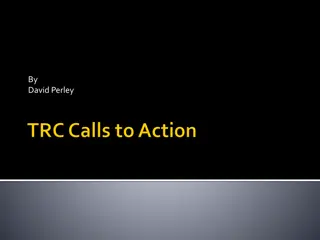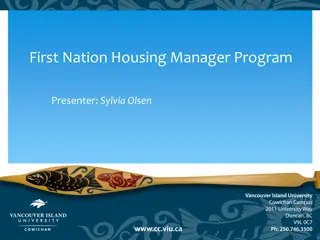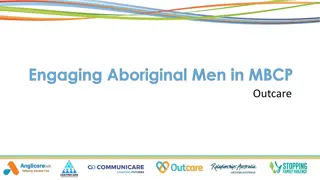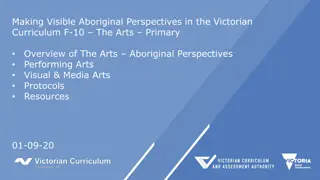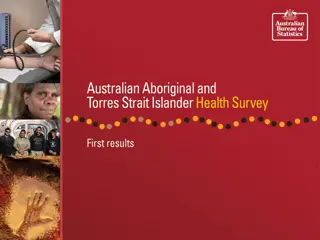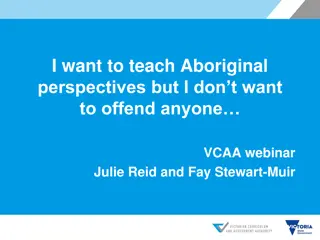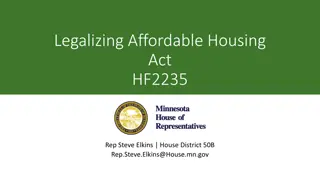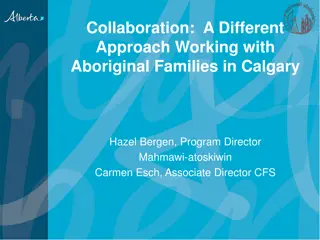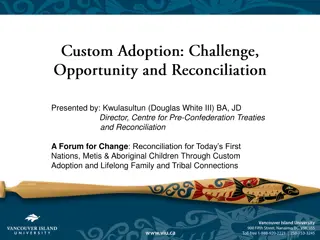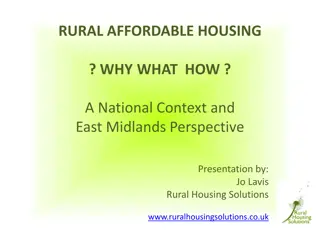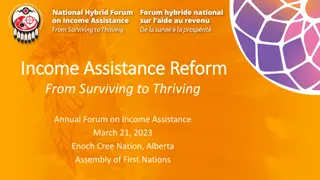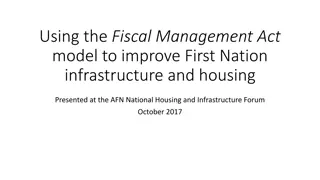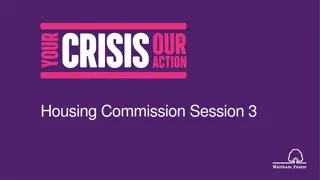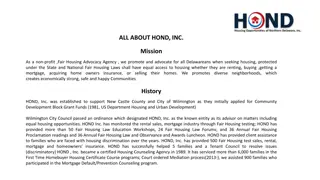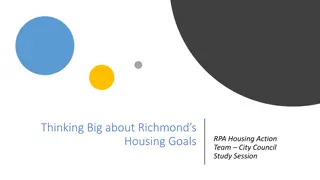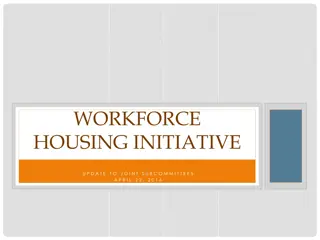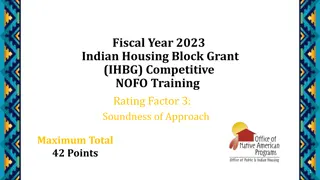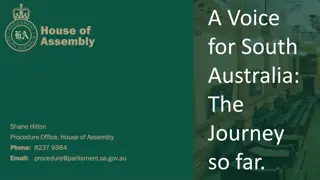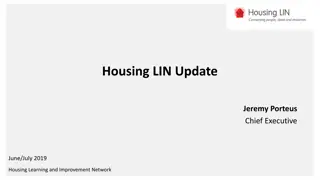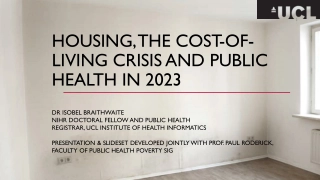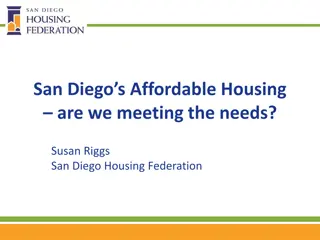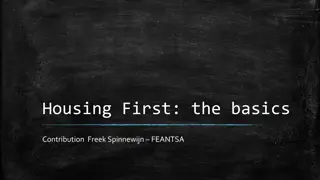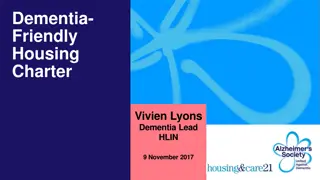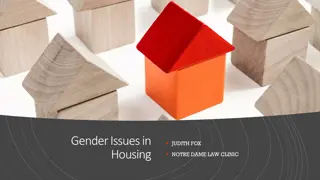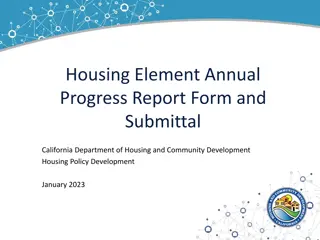Challenges in First Nations & Aboriginal Housing Research
The slides touch upon negligence and biases in data collection related to First Nations and Aboriginal housing in Canada. They explore trends in urban Aboriginal homelessness, bureaucratic neglect, and different approaches to Indian-state relations. The content also delves into historical studies on Aboriginal housing issues and the impending crisis. Perspectives, policies, and future implications are discussed, shedding light on the urgent need for attention to this critical issue.
Download Presentation

Please find below an Image/Link to download the presentation.
The content on the website is provided AS IS for your information and personal use only. It may not be sold, licensed, or shared on other websites without obtaining consent from the author. Download presentation by click this link. If you encounter any issues during the download, it is possible that the publisher has removed the file from their server.
E N D
Presentation Transcript
First Nations & Aboriginal Housing in Canada: A Catalogue of Negligence Dr. Yale D. Belanger Associate Professor Political Science University of Lethbridge Making Data Meaningful: Research Exchange and Collaboration on Homelessness in Alberta 22-23 April 2015
Why is data is ignored? We have to ask what biases exist that result in data / information and agreed upon conclusions to be ignored.
Urban Aboriginal Homelessness 100 97 90 95 80 70 75 60 66 50 62 55 40 47 46 38 30 36 35 30 20 28 24 20 20 10 16 11 0
What leads to these trends? Is bureaucratic neglect the cause?
JR Miller (CRC): three approaches to Indian-state-relations: 1) Two Row Wampum 2) Assimilation 3) Citizens Plus
Two-row wampum metaphor Envisions Canada & First Nations as distinctive self-governing entities. Assimilation appeals to those who think that cultural homogenization is inevitable ... and to those who long for a final resolution of the challenges that arise from cultural diversity. Citizens Plus First Nations and other Canadians share a common citizenship -- a middle ground on which to develop a cooperative relationship -- in a context of additional accommodation of Aboriginal rights.
No need for a reserve housing policy; Urban relocation/reserve dissolution imminent; Looming to actual Aboriginal housing crisis identified (count em 16 studies): Ewing Commission (1934-36) SJC (1946-48) Hawthorn (BC) (1955) Federal Housing Study (1958) SJC (1959-61) Hawthorn-Tremblay Report (1966, 1967) RC on Health Services (1964) RC Status of Women in Cda (1969)
Penner Report (1983) Nielsen Task Force (1985) Unfinished Business: An Agenda for all Canadians in the 1990s (1990) Auditor General report (1990) Standing Committee on Aboriginal Affairs (1992) RCAP (1996) Auditor General report (Fraser 2003) On-Reserve Housing Support (2011) Aboriginal separateness evident (stage 3) Ineligible for NHA (until 1985) Ineligible for National Affordable Housing Program Why?
Overwhelming complexity; BNA Act, 1867 (S. 91, ss.24) Basis of inter-jurisdictional feuding dating to the 1950s. Indian Act, 1876 Indians were non-citizens (wards); Retain status and programming until civilized. Aboriginal, M tis & Inuit (CA, 1982); Treaty and non-Treaty Indians Status and non-status Indians Urban and reserve/rural AB peoples AB separateness: social, legal, policy.
Action is required: 1958: 7,000 units and $140M (2014$) for additional infrastructure/repairs; 1961 (housing crisis noted) to the 2000s (ongoing and worsening crisis): ad-hoc response! 2014: endemic/chronic reserve housing crisis (~30,000 unit shortfall; ~89,000 units in need of renovations) that cost $2.3B to manage, 2006-2013.
Timeline of a Crisis (9 of 404 Globe and Mail stories, 1959-2011): * Indian housing termed poor by minister. 14 August 1959, p. 4. * Houses for Eskimos described as dumps. 10 June 1967, p. 11. * Housing plan for Indians curtailed. 14 May 1970, p. 12. * M tis seek better housing. 22 April 1972, p. 37. * Half of Indian housing is substandard. 18 July 1985, p. 1. * Housing crisis grows for Canada s Inuit. 2 June 1994, p. A5. * How to put a roof over their heads. 20 June 1999, p. A17. * Housing crisis on reserves worsening, Fraser says. 9 April 2003, p. A10. * A Christmas wish for our many Attawapiskats (constitutional debate not required). 17 December 2011, p. A9.
Projected costs to Aboriginal housing, 1985- 2003 (large majority reserve): increased 4.57x from $1.02B to $4.66B. Projected increase in management mode, annual costs in 2031 ~$15.1B; Reserve population growth: 361,000 (2006) to 511,000 in 2013; M tis and Inuit housing often ignored: M tis: 404,000 (2006) to 500,000+ (2031) Inuit: 53,000 (2006) 77,000 (2031). In 2031 upwards of 40% of Aboriginal peoples likely to live in a CMA.
Substantially heightened homeless rates; Lack of reserve, urban, and combined policies debilitating (both for housing and homeless); Unique drivers/pathways remain unexplored or poorly understood: the Indian Act; jurisdictional and coordination issues; residential schools; child welfare; social marginalization/isolation, systemic discrimination and stigmatization (Thurston & Mason 2010).
Jurisdictional infighting leaves Aboriginal peoples in a policy void; Living in substandard housing both reserve and urban; Youth are particularly vulnerable (i.e., simply preparing for homelessness); * Reserve survey needed to capture extent of the problem; Cautionary tale: hasty inclusion can backfire: Bill C-31 (1985).
First Nations & Aboriginal Housing in Canada: A Catalogue of Negligence Dr. Yale D. Belanger University of Lethbridge belayd@uleth.ca 403-382-7101
